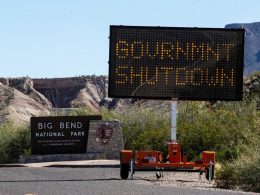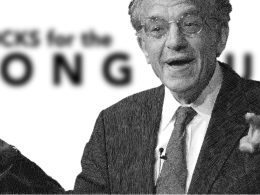by Hubert Marleau, Market Economist, Palos Management
April 5, 2025
Last week, I wrote: “The bottom line is that there is only one way for the U.S. to bring its balance of payments into normal equilibrium: it would need to raise its national saving rate by at least 3% of GDP. This would amount to about $900 billion; and in order for it to happen, the US would need to reduce its budget deficit, through tax increases or spending cuts; increase profits by decreasing corporate taxes; or galvanize personal savings by decreasing personal income taxes or raising pension fund contributions. The truth is that without the help from large trade surplus countries, through more domestic spending and/or larger fiscal deficit, the process toward equilibrium in the trade balance equilibrium is almost impossible without a lasting downturn in the level of economic activity - a situation that is already happening, right now, but which Trump does not seems to care about. In my view, there is not much the new regime of tariffs can do to prevent the long-term decline in manufacturing employment. FT’s Martin Wolf wisely said: “Manufacturing is going the way of farming because rising productivity will win.”
Taking his words to heart, Peter Navarro, Trump’s right man on trade policy, says that import duties will raise $600 billion a year for the government, on top of $100 billion a year from tariffs on cars and trucks. Assuming that DOGE can get another $100 to $200 billion in spending reductions, the ensuing savings would amount to about 3% of N-GDP, the sweet spot for a comfortable economic equilibrium. Unfortunately, however, this process would not be amicable to growth because it would take the Federal tax revenue share of N-GDP above 19% versus a 27.3% share average since 1975. The iron law of government revenue states that anything more than 17.5% brings lower levels of economic activity.
In this connection, Trump’s gamble with his broad imposition of tariffs and the dollar’s reserve currency status has put Americans in the dumps about both the economy and the stock market. While it is true that bad feelings don't always translate into lower levels of economic activity, they can and do matter if they last too long by putting off household spending and delaying business investments. We have already seen some of this in the details of the BEA’s February report on Personal Income and expenditures, resulting in a Atlanta Fed GDP Now contraction estimate for Q1 of 0.8%, which is adjusted for imports and exports of gold.
Assuming that the average levy on imports will rise 15 percentage points in 2025, Goldman Sachs believes that the economy will deliver year-end core PCE inflation of 3.5% and reduce GDP growth by half a percentage point to just 1% in Q4, with a 35% chance of the economy falling into a recession if sentiment were to worsen. JPMorgan, meanwhile, pegs the recession odds at 60%.
Gold Is Money
A reader reminded me that in 1912, J.P. Morgan said: “Gold is money, everything else is credit.” This is a good reason to hedge portfolios with solid gold stocks. My concern is why the dollar has been acting badly of late. If it were just for cyclical reasons like the coming change in monetary stance, fiscal policy and growth differentials between the US and the rest of the world, there would be much to worry about. What is fearful is dollar selling by foreigners where the ownership of US assets are disproportionately huge. Foreigners own 18% of the US equity market versus 7% in 2000. February data on capital flow does not support that takeaway. According to Michael Howell of CrossBorder Capital, there is no evidence that money is leaving the US en masse. YET. What if the retaliation takes the form of asset sales? Right now two things are needed to bring confidence back: a fall in gold prices and a rise in the value of the dollar combined with a compliant Fed. The latter is not likely despite the demand by Trump to cut interest rates. Based on remarks by Chairman Powell, the Fed is not about to offer imminent relief.
So What Went On Last Week?
On Monday, the S&P 500 shook off trade war jitters and stagflation fears, but traders remained apprehensive about a possible scenario in which a hostile U.S. drags the world into a destructive trade conflict, referring to the infamous 1930 Smoot-Hawley duties that served as a cautionary tale about abusing protectionism. Imports are a much larger share of GDP now than they were back then by a long shot: 14% versus 5%, so I’m not surprised their concerns have pushed the CBOE Volatility Index - the so-called the Wall Street Fear Gauge - to 22.28 and the Skew Index - the measure of perceived tail-risk - to 149.
On Tuesday, investors got an unmistakable whiff of stagflation, making the “no landing” scenario, with little inflation, unlikely. The marquee gauge of US manufacturing (ISM-MGF) was disappointing while the Job Openings and Labor Turnover Survey proved that the labour market was softening. First, manufacturing appears to have fallen back into a slump, the ISM manufacturing index having dropped to 49.0% in March from 50.3% in February, signalling contraction because all the growth sub-indices had posted declines in production, new orders and employment. What was particularly disconcerting was the decidedly poor juxtaposition between the employment indicator, which registered a lackluster 44.7, and the price-paid index, which shot up to 69.4, suggesting that between new orders and inventories, companies might have too much stuff on hand, given the status of new orders. Second, the JOLTS report showed that hiring had held up in February, but early signs of cracks had emerged. Employers cut back the number of posted job openings by 194,000 while workers largely remained in place and employers raised layoffs. The trading day started weak, but in the final hour the S&P 500 surged producing a daily gain of 0.4%, perhaps because the U.S. Senate was set to vote on challenging Trump’s justification for tariffs against Canada. Many Wall Street experts believed that Washington might soften the tariff blow on Canada and Mexico, coming in the form of confirmation that goods that were compliant under the USMCA trade agreement between the three countries would remain tariff-free.
On Wednesday, weary of what “Liberation Day” might bring, the benchmark had many ups and downs, closing 0.7% higher than the day before. However, stock futures plunged sharply - about 1.5% for the S&P 500 and 4.0% for Nasdaq - after Trump announced that the U.S. would roll out a global 10% tariff on all imports with extra reciprocal levies differing by country.
On Thursday, the Rose Garden celebrated “Liberation Day”: liberation from wealth for the rich and affordability for the poor. WOW! President Trump imposed the steepest America tariffs in a century, sparking threats of global retaliation, massive outflows of money, alienation of allies, and admiration for China. This will not end well for the US because it may well emerge as the biggest loser. Indeed this hodgepodge of general, specific and reciprocal tariffs will raise the effective import tariff between 22% and 29% from 2.5%, not only becoming a “game changer” for the global economy, but one that upends the time-honoured system of international trade. With its confusion of general, specific and reciprocal tariffs, I'm afraid that the U.S. may end up as the biggest loser, giving China full world dominance when it comes to international trade. Many commentators believe that the U.S. will be the only country with tariffs, whereas the rest of the world will be essentially free of them.
As a result of all this, 3 big things happened: The S&P 500 tumbled 4.8%, ten-year treasury yield rose 10 bps, and the dollar index fell 2.29 points.
On Friday, after Thursday's brutal market selloff, caused by the way Trump had confounded the world with his massive tariffs, economic prints on the employment situation dominated the headlines, thanks to mixed numbers. Continuing jobless claims jumped to 1.903 million, the highest since November 2021. The Challenger reported that job cuts had jumped to 275,249, up 204.8% y/y, while the ISM service employment index plunged to 46.2, the lowest since December 2023. However, the economy added 228,000 jobs in March - a healthy showing - well above the gain of 140,000 that labour economists had predicted; yet the unemployment rate ticked up to 4.2%. Go figure! Interestingly, the Sahm Rule, which has coincided with every recession since 1970, is not signalling a recession. It sounds the alarm when the 3-month moving average of the headline unemployment rate rises by at least half a percentage point from its low of the past 12 months. The threshold is around 4.4%. It did not matter, the S&P 500 violently crashed 6.0% to 5074 - 17.4% lower than the February high of 6144.
The Conclusion
In my judgement, negotiation is the most likely outcome of the trade war, even though it will be a painful wait to get there. In this connection, the S&P 500 should consolidate around 5400 for the next 75 days, noted UBS. Indeed, there will be tariffs talks, which could open doors. Unfortunately, however, reciprocal tariffs mean a series of laborious bilateral negotiations, complicating hopes for a quick recovery. Nonetheless, people make investment decisions based on emotion. What is important is to understand economic theory alongside business data; and most of all control behaviour. It takes guts, but dollar-cost-averaging in solid companies, is the only proven way to beat the market. Nearly 200 years ago, Baron Rothschild famously said, ‘Buy when there’s blood in the streets.’
Copyright © Palos Management
















